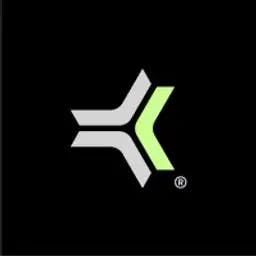Product executive at Brex on building Bill Pay and AI-powered financial automation
 Jan-Erik Asplund
Jan-Erik Asplund
Background
We spoke with a Product Executive from Brex who provided insights into the company's most impactful features and product development approach.
The conversation explores how Brex built its Bill Pay functionality, implemented AI capabilities, and created value metrics to demonstrate ROI to enterprise customers, while highlighting their pod-based collaboration model between product, engineering, and design teams.
Key points via Sacra AI:
- Brex's product evolution shows how spend management, fast credit card sign-up, and AI integration drive enterprise value. The company's pod structure (EPD teams) enables rapid iteration while value metrics demonstrate ROI to customers, with the CEO providing hands-on direction to maintain momentum.
- Bill Pay became a competitive necessity for Brex, automating accounts payable with invoice scanning, approval workflows, and accounting integrations to win against rivals like Ramp. "Bill Pay was developed because of significant customer demand. Brex's competition was building it as well. Ramp had Bill Pay, and in order to win in competitive situations, we needed to build it."
- Brex's AI strategy shifted from a centralized assistant to embedded, domain-specific features after early customer feedback revealed greater value in workflow automation than chat interfaces. "The feedback we got was that the chat interface is great, but what they would really want is for AI to be embedded within each product space... Instead of further investing in an assistant, each team was chartered with thinking about what AI features could further enhance the value of that product capability itself."
Questions
- During your time at Brex, which features were most impactful for customers or for driving growth?
- What made Bill Pay so impactful for customers? What problem was it solving and how did Brex approach the solution in a way that resonated?
- Can you talk about how this feature came to be? Who were the key people that drove the development of Bill Pay day to day?
- Staying on Bill Pay, do you remember what the hardest part was to build? Either technically or from a product design standpoint?
- You also mentioned fast sign-up for credit cards. Can you walk me through what that experience looked like and how Brex made it faster than others?
- Was the underwriting logic baked into the onboarding flow itself, or was it something async that ran later based on enriched data?
- How do product and engineering typically partner at Brex from early idea through launch and eventually ownership? What does that collaboration look like in practice?
- Within one of those pods, how are decisions typically made? For example, if there's a debate about UX or a technical trade-off, how do product, engineering, and design resolve it?
- Can you give an example of how the team approached building the Brex chat assistant with large language models? Where did the idea come from?
- When you shared prototypes with those early adopters, do you remember any particular feedback or usage pattern that convinced the team this was worth continuing to invest in?
- Did that feedback lead to changes in how the team scoped future AI work? For example, shifting from a centralized assistant to domain-specific AI features inside modules like Bill Pay or ERP sync?
- Even without names, do you recall what the original user problem was that AI-driven ERP exports aimed to solve?
- When the team was building those AI-powered onboarding flows, like automatically mapping transaction data to accounting primitives, were there any major technical challenges that stood out?
- Was there any human-in-the-loop process to help supervise or correct those mappings early on, or were you trying to go fully automated from the start?
- Other than the features we've already talked about, was there another particularly impactful product or initiative launched during your time at Brex that you think deserves attention?
- What kinds of value metrics did the dashboard highlight? And how did the team choose which ones to surface to customers?
- What made these value metrics a priority for the company?
- Who were the top people that others naturally went to for help—the ones who were known for being really good at unblocking or making progress?
- What made Lindsey Graham stand out as a great PM in your view?
- If you were advising an investor today who was closely watching Brex's product development, what signals would you suggest they track to judge execution quality?
- Anything you think we should have asked but didn't? Or any final thoughts you'd want to share about what made Brex's product development effective or unique?
Interview
During your time at Brex, which features were most impactful for customers or for driving growth?
The spend management with Bill Pay and fast sign-up for credit cards were most impactful.
What made Bill Pay so impactful for customers? What problem was it solving and how did Brex approach the solution in a way that resonated?
Brex built a way for businesses to get accounts payable completed. Key features are automated payment, which automates invoice entry, approval workflows, and payment. It can schedule payments and integrate with other accounting software like QuickBooks, NetSuite, or Xero.
Can you talk about how this feature came to be? Who were the key people that drove the development of Bill Pay day to day?
Bill Pay was developed because of significant customer demand. Brex's competition was building it as well. Ramp had Bill Pay, and in order to win in competitive situations, we needed to build it. We had a couple of product people and engineering teams working on it. Vinit Panija was the primary PM lead on this one.
Staying on Bill Pay, do you remember what the hardest part was to build? Either technically or from a product design standpoint?
We built invoice scanning through optical character recognition. Getting the right information out of the OCR was initially challenging, but it got significantly better over time.
You also mentioned fast sign-up for credit cards. Can you walk me through what that experience looked like and how Brex made it faster than others?
We have a self-serve sign-up for corporate credit cards. We were looking to automate the underwriting of the credit card process itself and be able to give the decision under 72 hours for our customers. We were trying to reduce that further down to 24 hours and even a couple of hours based on the information they provided.
Was the underwriting logic baked into the onboarding flow itself, or was it something async that ran later based on enriched data?
The underwriting is the reason it was 48 hours. We did have machine learning algorithms to compute the risk profile of an application, so it was not immediate like 10 minutes. The information they provided needed to be verified, but it was within the span of 48 to 72 hours.
How do product and engineering typically partner at Brex from early idea through launch and eventually ownership? What does that collaboration look like in practice?
We had what we call pods which is product, engineering, and design. That constituted the core team that would work together on projects. The product, engineering, and design were called the EPD teams. That team costed work, prioritized work, and then executed it.
Within one of those pods, how are decisions typically made? For example, if there's a debate about UX or a technical trade-off, how do product, engineering, and design resolve it?
The product managers own the vision and roadmap based on customer needs, what they are sensing from the market, competition, etc. They outline key capabilities and products to be built out. The engineering team is responsible for costing it. The design team creates prototypes that can be tested for rapid iteration.
Can you give an example of how the team approached building the Brex chat assistant with large language models? Where did the idea come from?
The idea was how we could use the latest technology trends to benefit our customers and help them get the most value out of Brex. Having this be a CFO's assistant where the direct admin user can ask questions about how to set something up in Brex, or quickly map GL codes, or ways of achieving things. Using the large language model as a natural language interface to interact with Brex. For this, we utilized short one-week sprints where we could build, ship, share with a set of early adopter customers, get their feedback, and then iterate.
When you shared prototypes with those early adopters, do you remember any particular feedback or usage pattern that convinced the team this was worth continuing to invest in?
The feedback we got was that the chat interface is great, but what they would really want is for AI to be embedded within each product space. For example, automatic mapping of field codes, or workflow definition that can enable automated workflows further in the product. Those were key feedback points we got.
Did that feedback lead to changes in how the team scoped future AI work? For example, shifting from a centralized assistant to domain-specific AI features inside modules like Bill Pay or ERP sync?
That feedback did create a shift. Instead of further investing in an assistant, each team was chartered with thinking about what AI features could further enhance the value of that product capability itself. The central team was only responsible for infrastructure-related work. Each vertical team or product team then took that and integrated AI into their own product visibility.
Even without names, do you recall what the original user problem was that AI-driven ERP exports aimed to solve?
More than AI-driven ERP code, we were looking at how we could help with faster onboarding with AI-driven automation. If a customer could give us their transaction record for the last 12 months, then how could we automatically map that to Brex primitives and quickly ingest their data and onboard them into Brex. Almost like migration from a competitor into Brex—like migration from Concur into Brex. How quickly could we do that using AI-enabled capabilities?
When the team was building those AI-powered onboarding flows, like automatically mapping transaction data to accounting primitives, were there any major technical challenges that stood out?
GL code mapping was one challenge. Translating the code from one system to another because there was no standardization between Concur and Brex. Dealing with semantic ambiguity of the transaction data was another challenge. Because a single transaction can be open to multiple interpretations. A particular vendor could be for office supplies or it could be for food. Making sure that we map that to a particular category or code required significant effort.
Was there any human-in-the-loop process to help supervise or correct those mappings early on, or were you trying to go fully automated from the start?
We did feel like we could do a best-effort mapping and then present that to the Brex admin for them to accept or reject.
Other than the features we've already talked about, was there another particularly impactful product or initiative launched during your time at Brex that you think deserves attention?
We created what are known as value metrics in the Brex dashboard. As soon as customers would log in, we could present those value metrics that are key KPIs that Brex is helping the customer derive from the system so that they understand the value that Brex brings to them.
What kinds of value metrics did the dashboard highlight? And how did the team choose which ones to surface to customers?
Spend control was one of them. Metrics that measure how well a business is controlling its spending. What is the percentage of transactions that are in compliance with the company's policies? What percentage of expenses missed the required documentation? What percentage of those expenses are in compliance?
Time savings was another bucket. Quantifying the hours or business days saved through the automation features that Brex provides. Those are two key ones that come to mind.
What made these value metrics a priority for the company?
This was a key initiative to help our enterprise customers understand the value Brex is providing so we can drive more net revenue retention, so existing customers will grow with Brex. This was also key for our sales team, so they could use these metrics to showcase why customers should choose Brex over our competition.
Who were the top people that others naturally went to for help—the ones who were known for being really good at unblocking or making progress?
Lindsay Graham was a great PM.
What made Lindsey Graham stand out as a great PM in your view?
She was very clear about the success metrics. She tracked them closely, was very helpful in bringing all the cross-functional teams on the same page. She was able to continue to make progress iteratively, and just overall brought a lot of thought to her work.
If you were advising an investor today who was closely watching Brex's product development, what signals would you suggest they track to judge execution quality?
NPS for customer satisfaction. Net revenue retention, overall GMV on the platform, how it's growing month over month and year over year. And then growth in net revenue.
Anything you think we should have asked but didn't? Or any final thoughts you'd want to share about what made Brex's product development effective or unique?
Our CEO had a lot of hands-on input and feedback into the product areas, and that drives growth clarity and urgency. I think this resulted in moving the company fast in a particular direction.
Disclaimers
This transcript is for information purposes only and does not constitute advice of any type or trade recommendation and should not form the basis of any investment decision. Sacra accepts no liability for the transcript or for any errors, omissions or inaccuracies in respect of it. The views of the experts expressed in the transcript are those of the experts and they are not endorsed by, nor do they represent the opinion of Sacra. Sacra reserves all copyright, intellectual property rights in the transcript. Any modification, copying, displaying, distributing, transmitting, publishing, licensing, creating derivative works from, or selling any transcript is strictly prohibited.













